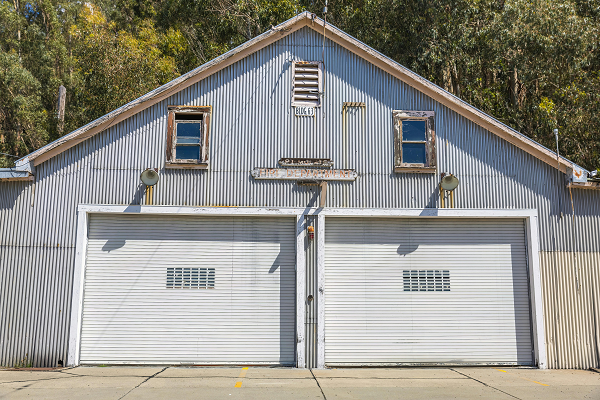
Garage door springs play a crucial role in the smooth operation of your garage door, yet they are often overlooked until an issue arises. Understanding the importance of these components is essential for every homeowner.
From the different types of garage door springs to signs of wear and damage, being informed can help you maintain the functionality of your garage door and ensure safety for you and your family.
In this article, we will delve into the world of door springs, providing valuable insights on what you need to know to keep your garage door functioning optimally.
Importance of Garage Door Springs
Springs might seem insignificant, but they play a crucial role in the smooth operation of your garage door. Without them, lifting a heavy door would be a Herculean task.
Function of Garage Door Springs
The springs are the muscle behind the operation of the door to your garage. They store and release tension to assist in the opening and closing of the door.
Role in Garage Door Operation
Garage door springs work in tandem with the garage opener to provide balance and support in the movement of the door. They help lift the door's weight and ensure it closes securely.

Types of Garage Door Springs
When it comes to garage door springs, there are two main types to consider:
1. Torsion Springs
Torsion springs are typically mounted above the door and twist to store energy. They are known for their durability and smoother operation.
· Understanding the Role of Torsion Springs - Torsion springs aren't just there to show off their fancy torque moves—they play a crucial role in keeping your door in tip-top shape. Let's unravel the mysteries of torsion springs, shall we?
· Mechanism of Torsion Springs - Torsion springs work by storing mechanical energy as they twist and unwind, providing the necessary force to lift the garage door. It's like a spring-loaded surprise party every time you open your door.
· Benefits of Torsion Springs - Torsion springs are known for their durability and efficiency. They can handle heavy loads and last longer than their extension spring counterparts. Plus, they're less likely to go snap, crackle, pop in the middle of the night, giving you peace of mind.
Read more about torsion springs here: https://www.designworldonline.com/what-are-torsion-springs/
2. Extension Springs
Extension springs are installed on both sides of the door and extend and contract to provide counterbalance. They are more common in older door systems.
· Importance of Extension Springs
Extension springs may not get as much attention as torsion springs, but they play a vital role in the smooth operation of your door. Let's shine a spotlight on these unsung heroes:
· Functions and Applications
Extension springs work by expanding and contracting to support the weight of the door as it opens and closes. They're like the silent partners in your door system, quietly doing their job without much fanfare.
· Differences from Torsion Springs
While extension springs may not have the same flashy moves as torsion springs, they have their own strengths. They're typically easier and cheaper to install and replace, making them a popular choice for some door setups. Plus, they can provide a smoother operation for lighter doors.
Signs of Worn or Damaged Springs
Knowing the signs of worn or damaged the springs on your garage door can save you from potential safety hazards and expensive spring repair:
Noisy Operation
If your door starts making unusual sounds like squeaking or banging, it might be a sign of worn-out springs.
Uneven Opening or Closing
If your door is struggling to open or close smoothly or appears lopsided, it could indicate issues with the springs.
DIY vs Professional Replacement
Deciding whether to replace the springs of your garage door yourself or hire a professional can be a tough choice:
Pros and Cons of DIY Replacement
DIY replacement can save you money upfront, but it can be dangerous and might lead to additional repairs if not done correctly.
Benefits of Professional Replacement
Professional replacement ensures the job is done safely and accurately, reducing the risk of injury and prolonging the lifespan of your door system.

Maintenance Tips for Garage Door Springs
Garage door springs are like the unsung heroes of your door, working hard to ensure smooth operation every time you press that magical button. To keep them in top shape, here are some maintenance tips you should follow:
Regular Lubrication
Just like how a good massage can rejuvenate your tired muscles, lubricating the springs of your door can work wonders for their longevity (click here to know more). Use a silicone-based lubricant to keep those springs gliding smoothly without any squeaks or resistance.
Inspection Routine
Make it a habit to inspect the springs of your garage door regularly. Look out for any signs of wear and tear, rust, or misalignment. Catching any issues early can prevent costly repairs down the line and ensure your door operates safely.
Safety Precautions When Dealing with Door Springs
Springs of the door to your garage may be small, but they pack a powerful punch. When it comes to handling them, safety should always be your top priority. Here are some precautions you should keep in mind:
Use of Safety Gear
When working with springs for your door, always gear up with safety glasses and gloves. These springs are under high tension and can cause serious injuries if not handled with care. Protect yourself, so you can live to tell the tale of your DIY door adventures.
Proper Tools and Techniques
No, a hammer and duct tape won't cut it when it comes to door springs. Make sure to use the right tools for the job and follow the recommended techniques for adjusting or replacing the springs. If in doubt, it's best to leave it to the professionals rather than risk a garage door disaster.
And there you have it, your crash course on door springs. Remember, a little maintenance and a lot of caution can go a long way in keeping the door to your garage running smoothly and safely.
In conclusion, being aware of the function, types, maintenance needs, and safety precautions related to garage door springs is key to ensuring the longevity and safe operation of your door.
By staying proactive and addressing any issues promptly, you can avoid costly repairs and potential safety hazards. Remember, the health of the springs to the door of your garage is essential for the overall functionality and security of your home.






